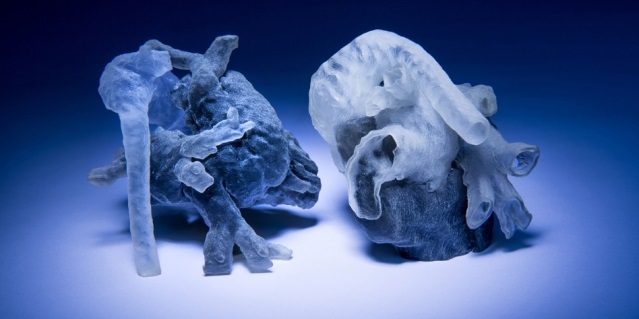
Researchers are creating 3D printouts of MRI scans to help surgeons plan their approach for specific heart surgeries. The work is being tested out in experiments by MIT’s Computer Science and Artificial Intelligence Laboratory (CSAIL) and Boston Children’s Hospital.
“Our collaborators are convinced that this will make a difference,” said Polina Golland in a press release. Golland, a professor of electrical engineering and computer science at MIT, led the project. “The phrase I heard is that ‘surgeons see with their hands,’ that the perception is in the touch.”
The research team includes Danielle Pace, a graduate student who appears as first author on the paper. She led the work of developing the software that analyzes the MRI scans. Medhi Moghari, a physicist at the hospital, developed new procedures to increase the precision of MRI scans 10-fold. Andrew Powell, a cardiologist there, leads the project’s clinical work. And shortly, seven cardiac surgeons at the children’s hospital will participate in a study to evaluate the impact of having the models.
MRI data consists of a series of roughly 200 cross sections of 3D objects, each with light and dark areas that may or may not indicate the edges of anatomical structures. Traditional MRIs aren’t precise enough to build a model that would be of value in surgical planning. Those can be augmented in general by imposing a generic version of the organ on top of the MRI to reflect standard placement of aspects of the organ. But in this case the surgery is frequently intended to repair irregular anatomy, which means the generic model might obscure the features the surgeon most needs to study.
Researchers have manually indicated boundaries in scans, but that process can take eight to 10 hours to complete. “They want to bring the kids in for scanning and spend probably a day or two doing planning of how exactly they’re going to operate,” Golland noted. “If it takes another day just to process the images, it becomes unwieldy.”
The new solution involves having a human expert identify boundaries in just a portion of the segments — and letting the software extrapolate from there. Segmenting three “patches” resulted in 80 percent agreement; 14 patches resulted in 90 percent agreement.
“I think that if somebody told me that I could segment the whole heart from eight slices out of 200, I would not have believed them,” Golland says. “It was a surprise to us.”
That part of the work takes a total of about an hour. The 3D printing process takes another couple of hours.
To check the results, a clinical study will test MRIs from 10 patients who have already received treatment at the hospital. Each of seven surgeons will be given data on all 10 patients, including the raw MRI scans and either a physical model or a computerized 3D model, based on either human segmentations or algorithmic segmentations.
Using that data, the surgeons will draw up surgical plans that will be compared to documentation of the interventions that were actually performed on each of the patients. The hope is that the study will shed light on whether 3D-printed physical models can improve surgical outcomes.
The new approach will be presented at the International Conference on Medical Image Computing and Computer Assisted Intervention in Munich in October. The work is being funded by the hospital and Harvard Catalyst, a science center that brings researchers and clinicians together for scientific innovation in the health sciences.
Leave a Reply